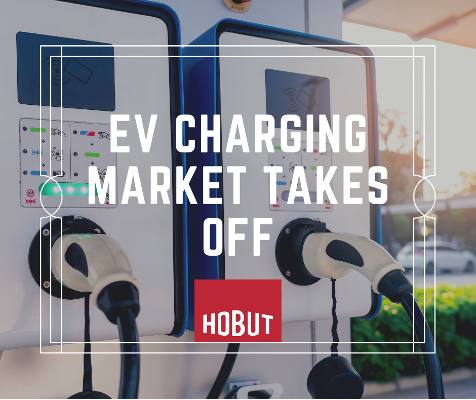A Growing EV Market
The electric vehicle market is growing at a fast rate, with almost 300,000 pure electric vehicles on the road and more than 600,000 plug-in models (including plug-in hybrids – PHEVs).
This is set to soar over the next few years, after the announcement that new petrol and diesel cars will not be sold after 2030. Hybrid sales will be banned from 2035. Sales of new petrol and diesel cars have seen a similar decline, as people are growing in confidence with the EV infrastructure.
While traditional petrol and diesel car users are used to travelling 500+ miles before filling up, the EV market is yet to offer this amount but with the average trip being under 10 miles, it is becoming increasingly more appealing.
With the added benefit of helping towards mitigating climate change and potentially avoiding hours of waiting for fuel as with the recent fuel shortages, we are heading for an industry boom.
EV Infrastructure
Early conversations were geared around the lack of charging units. The fear of running out of power midway in your journey and having to wait around for the EV to gain full charge.
Yes, currently the EV charge from empty to full takes a lot longer than filling with fuel but it can now be more convenient i.e., when the car is not in use. Like charging a mobile phone. Overnight at home, at the supermarket when doing your home shopping and all day while you’re at work.
How much you charge, or need to charge, will also change – with fuel, most people drive their cars until the fuel gauge shows low on fuel and we fill the tank up to full again. This behaviour stems from the inconvenience of having to go to a petrol station. With electric cars and the convenience of charging at home, you may find you ‘top up’ the battery each day as it’s used rather than waiting for it to get low – again like a mobile phone.
Another factor that may impact the number of times you need to charge your electric car or van is temperature. Lithium-ion batteries perform better in warmer weather, so you might notice a slight drop in the range your EV can travel in the colder winter months.
In summary, how long it takes to charge an electric car depends on:
- Your car’s battery size
- How many miles you do between charges
- Your charging behaviour, i.e., topping up often vs charging from low to full less often
- The power rating of the charger you’re
The EV infrastructure as well as battery performance will only improve and grow as time goes by.
Technology will improve as we seek ways to reduce the weight and size of the battery, the speed of charge and how many charging locations are available.
Charging your Electric Vehicle
You can charge an EV either by plugging it into a socket to take electricity from the grid or by plugging into a charging unit – Three Pin Plug: A standard plug that can be connected to any 13-amp socket. Socketed – Socketed: A charge point where you can connect a Type 1 or Type 2 cable. Tethered: A charge point with a cable attached with either a Type 1 or Type 2 connector.
There are four types of chargers.
- Slow Chargers – Slow chargers have a maximum of 3.6 kW available, and typically take between 6-12 hours to recharge a pure electric car. These chargers are ideal for overnight charging.
- Fast Chargers – Fast chargers are rated at 7-22 kW and usually take between 3-7 hours to recharge an EV depending on the battery size of the car. There are several models available to buy and lots of different installers who can fit them for you. It can be confusing, but all you need to do is decide what power rating you want and choose either a tethered or socketed charge point.
- Rapid Chargers – Rapid are the quickest (43 kW+), generally capable of charging cars to 80% in 20-40 minutes, depending on how big the battery is and how much charge it’s holding to start with, so they’re a great way to top up during long journeys. You can often find them in motorway service car parks, petrol stations, larger shopping centres and supermarkets.
- Wireless Chargers – Wireless charging is super convenient and allows for the transfer energy between a pad on the ground and a compatible EV – no need for cables at all. While it’s not in the UK yet, Norway will install the world’s first wireless electric car charging stationsfor Oslo taxis and BMW is due to release their new wireless charging solution with their new plug-in hybrid 530e iPerformance very soon.
Electric mobility is taking off, even COVID-19 can’t stop it.
EV sales are shifting up a gear – partly due to generous subsidies in many EU countries – and EV adoption will likely proceed even faster than previously predicted. As a result, EV charging will evolve from a niche sector into a multibillion-pound market by 2030.
Passenger EVs alone will generate a market volume of roughly £7 billion in the UK. This represents a massive opportunity for utilities, big oil, automotive OEMs, and financial investors.
Hobut have already entered this field and have completed projects with Earth Leakage Relay manufacturers. We help to deliver Earth Leakage sensing solutions and bespoke Toroidal sensors for the EV market.

We have a comprehensive range of Core Balance Current Transformers
Specifically for use with Earth Leakage Relays. The range can be manufactured to operate any brand of relay and branded with the relay manufacturers name.

